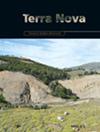铅同位素对劳伦西亚前寒武纪地壳结构、热历史和岩石圈形成的影响
IF 1.7
3区 地球科学
Q2 GEOSCIENCES, MULTIDISCIPLINARY
引用次数: 0
摘要
劳伦提亚(祖先北美洲)记录了近 40 亿年的地壳演化过程。在此,我们利用新编制的大陆尺度铅同位素数据库来评估劳伦提亚前寒武纪的地壳演化。铅模型年龄产生了 2.7 Ga 的峰值、2.5-1.8 Ga 的最小值和 1.8-0.9 Ga 的连续值。铅模型年龄产生了热时数据,并通过与弧有关的岩浆作用和吸积造山作用追踪地壳的生长。模型 232Th/204Pb 和 238U/204Pb 与绘制的地壳域大致相关。2.7Ga之后,238U/204Pb和232Th/238U的同质性更强,辐射性更低,这表明向更年轻的来源转变、早期同位素储层的消失和地壳再加工的增加。在具有丰富的铁闪长岩和正长岩-芒硝-石榴石-花岗岩(AMCG)岩浆岩的新生代造山运动中,铀和钍从铅中分馏出来。这种分馏表明富含铅的下地壳被移除,支持岩石圈创始和岩浆下溢的成岩模式。岩石圈减薄和相关的岩浆活动可能是造成中新生代高地热梯度的原因。本文章由计算机程序翻译,如有差异,请以英文原文为准。
Lead Isotopes Constrain Precambrian Crustal Architecture, Thermal History and Lithospheric Foundering in Laurentia
Laurentia (ancestral North America) records nearly 4 billion years of crustal evolution. Here, a newly compiled continental‐scale Pb isotopic database is used to evaluate the Precambrian crustal evolution of Laurentia. Pb model ages yield a 2.7 Ga peak, a 2.5–1.8 Ga minimum and 1.8–0.9 Ga continuum. Pb model ages yield thermochronometric data and track crustal growth via arc‐related magmatism and accretionary orogenesis. Model 232 Th/204 Pb and 238 U/204 Pb broadly correlate with mapped crustal domains. More homogeneous and less radiogenic 238 U/204 Pb and 232 Th/238 U after 2.7 Ga suggests a shift to more juvenile sources, loss of early isotopic reservoirs and greater crustal reworking. U and Th are fractionated from Pb in Proterozoic orogens with abundant ferroan and anorthosite–mangerite–charnockite–granite(AMCG)‐suite magmatism. This fractionation suggests the removal of Pb‐rich lower crust, supporting petrogenetic models involving lithospheric foundering and magmatic underplating. Lithospheric thinning and associated magmatism may have contributed to high middle Proterozoic geothermal gradients.
求助全文
通过发布文献求助,成功后即可免费获取论文全文。
去求助
来源期刊

Terra Nova
地学-地球科学综合
CiteScore
4.80
自引率
8.30%
发文量
59
审稿时长
2.3 months
期刊介绍:
Terra Nova publishes short, innovative and provocative papers of interest to a wide readership and covering the broadest spectrum of the Solid Earth and Planetary Sciences. Terra Nova encompasses geology, geophysics and geochemistry, and extends to the fluid envelopes (atmosphere, ocean, environment) whenever coupling with the Solid Earth is involved.
 求助内容:
求助内容: 应助结果提醒方式:
应助结果提醒方式:


